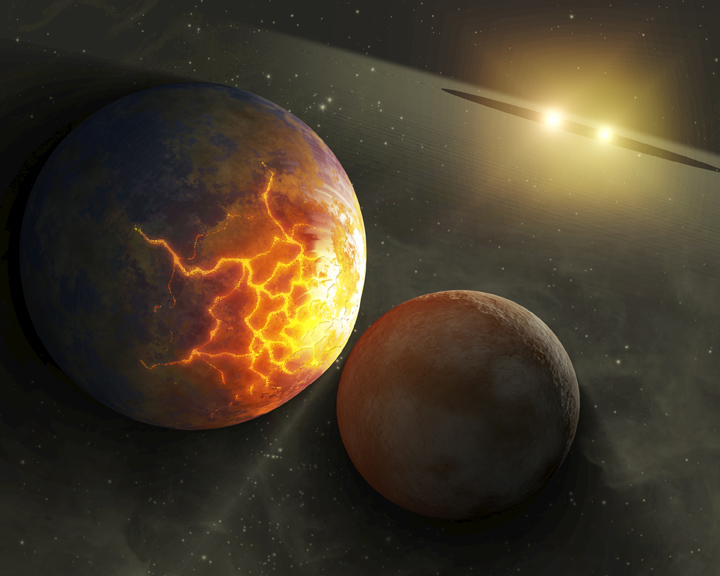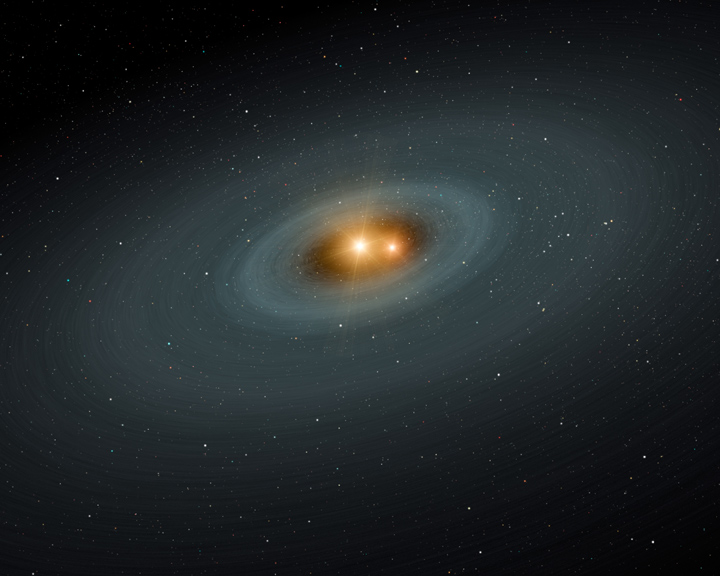Image List
-

This artist's concept illustrates an imminent planetary collision around a pair of double stars. NASA's Spitzer Space Telescope found evidence that such collisions could be common around a certain type of tight double, or binary, star system, referred to as RS Canum Venaticorums or RS CVns for short. The stars are similar to the sun in age and mass, but they orbit tightly around each other. With time, they are thought to get closer and closer, until their gravitational influences change, throwing the orbits of planetary bodies circling around them out of whack and leading to collisions. Spitzer's infrared vision spotted dusty evidence for such collisions around three tight star pairs.
NASA/JPL-Caltech -

This artist's concept illustrates a tight pair of stars and a surrounding disk of dust -- most likely the shattered remains of planetary smashups. Using NASA's Spitzer Space Telescope, the scientists found dusty evidence for such collisions around three sets of stellar twins (a class of stars called RS Canum Venaticorums or RS CVns for short). The stars, which are similar to our sun in mass and age, orbit very closely around each other. They are separated by just one-fiftieth of the Earth-sun distance. As time goes by, the stars get closer and closer, and this causes the gravitational harmony in the systems to go out of whack. Comets and any planets orbiting around the stars could jostle about and collide.
NASA/JPL-Caltech